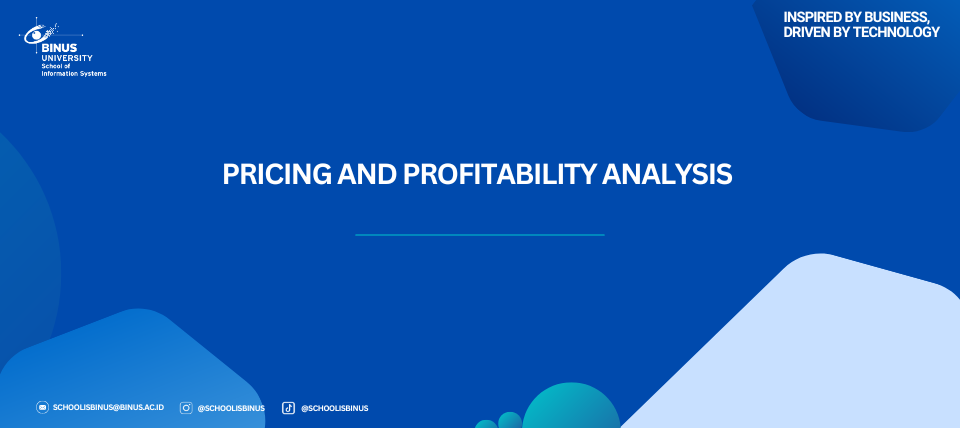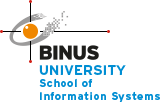Pricing and Profitability Analysis

Pricing Decisions
After a manufacturing company produced goods to be sold, they will have to decide on how much they will price their goods. To achieve profitability, the company will have to make sure that the price they are setting is of a higher value than the cost of making the product. However, the company should also be considerate as to not make the selling price too expensive that customers are not interested in buying the product all together. This is one of the reasons why pricing decisions is often the most difficult decision to make by managers. There are five methods to deciding price, which are using the economic theory, pricing of special orders, cost-plus pricing, target costing, and activity-based pricing.
Through economic theory, it is explained that there are dynamics between pricing and demand. The relationship between the two is inversely proportionate, where the higher the price, the lower the demand. Price with maximized profit can be found using the formula as follow:
𝑷𝒓𝒐𝒇𝒊𝒕 𝑴𝒂𝒙𝒊𝒎𝒊𝒛𝒊𝒏𝒈 𝑷𝒓𝒊𝒄𝒆=((𝑃𝑟𝑖𝑐𝑒−𝑉𝑎𝑟𝑖𝑎𝑏𝑙𝑒 𝐶𝑜𝑠𝑡𝑠)×𝑄𝑢𝑎𝑛𝑡𝑖𝑡𝑦 𝐷𝑒𝑚𝑎𝑛𝑑𝑒𝑑)−𝐹𝑖𝑥𝑒𝑑 𝐶𝑜𝑠𝑡𝑠
Using the formula, the price which produces the highest profit will be the profit maximizing price.
Aside from prices of normal products, managers also have to decide the best price for special orders. When a customer orders in massive quantities, customers may offer a slightly lower price to pay for the goods than the normal price given by the vendor. Vendors may accept or reject these special orders. Managers of the vendor may perform incremental analysis to determine whether the offer from the special orders will be profitable for the company. Through incremental analysis, managers will be able to see the cost differences between normal orders and the special order. Even though it may look like that the revenue received from special orders is lower than the revenue received from a normal order, if the net income calculated is higher from the special order, then the company should probably accept the special order.
The main objective of many businesses is to generate great profit. Profit is received when the selling price of a product is larger than the cost it takes to produce a product. The simplest method of price decision that follows this logic would be cost-plus pricing. This method is done by the addition of reasonable markup on top of the product cost to reach a reasonable profit. Since the markup is reasonable, the company would be guaranteed sufficient quantities to be sold at the price. However, it is important to note that it might take trial and error to achieve the reasonable markup percentage to be used. The method itself is also tricky to be used by manufacturers as it can become circular. Manufacturers will have to estimate the demands to determine manufacturing costs, but also keep in mind that the price of the product also affects the quantity demanded.
When the design of a product is completed, it will most likely be difficult to make changes to press on costs. The more features a product has, the higher the cost of the product. Companies can use target costing as an integrated way to predetermine aspects of the product that would ensure profit. There are five steps to target costing, which starts with specifying features and price, then determining the desired profit, then finding the target cost, which is the price substracted by the desired profit, then design product to meet the target cost, finally, if the product designed cannot meet the targeted cost, the company will have to start over from specifying the features and initial price.
Costs related to maintaining customer relationships through customer service should also be considered by the company. Examples of indirect costs from servicing customers that are assigned to cost pools are the cost of processing orders and cost of handling returns. The customer profitability measurement system can be used to see customer profitability. The company will be able to see how much profit percentages they get from the assignment of specific orders and costs, as well as servicing related costs from each customer.
Lastly, companies can use the activity-based pricing method to decide the selling price of their proposed goods. This pricing method also gives a price to services that will be given to the customer when they request it on top of the price of the actual goods, like they are choosing from a menu. Due to the added cost for the customer, they will be more careful about the services they request, and it might even lead to lesser imposition towards the seller.
Companies often have more than one product that they are selling. When one product performs better than the others, companies will focus more of their productions on that product. The management will have to come up with the best combination of production that will bring the most profit. The combination of multiple products being produced is called a sales mix. With limited resources, management will have to focus on the contribution margin per unit of scarce resource.
When the revenue of a segment is less than its avoidable expenses, the segment is subject to elimination. Avoidable expenses are the expenses the company will not incur if the segment is eliminated. However, aside from the comparison of the revenue and avoidable expenses, management should also consider other factors, such as, if the difference between the revenue and avoidable expenses is not too significant, management should also explore further the benefits of the segment, does the product from this segment help the sales of other products and the likes.
Reference: Colin Drury, (2021), Management and Cost Accounting, 11th Edition. Publisher: Annabel Ainscow, ISBN: 978-1-4737-7361-5

